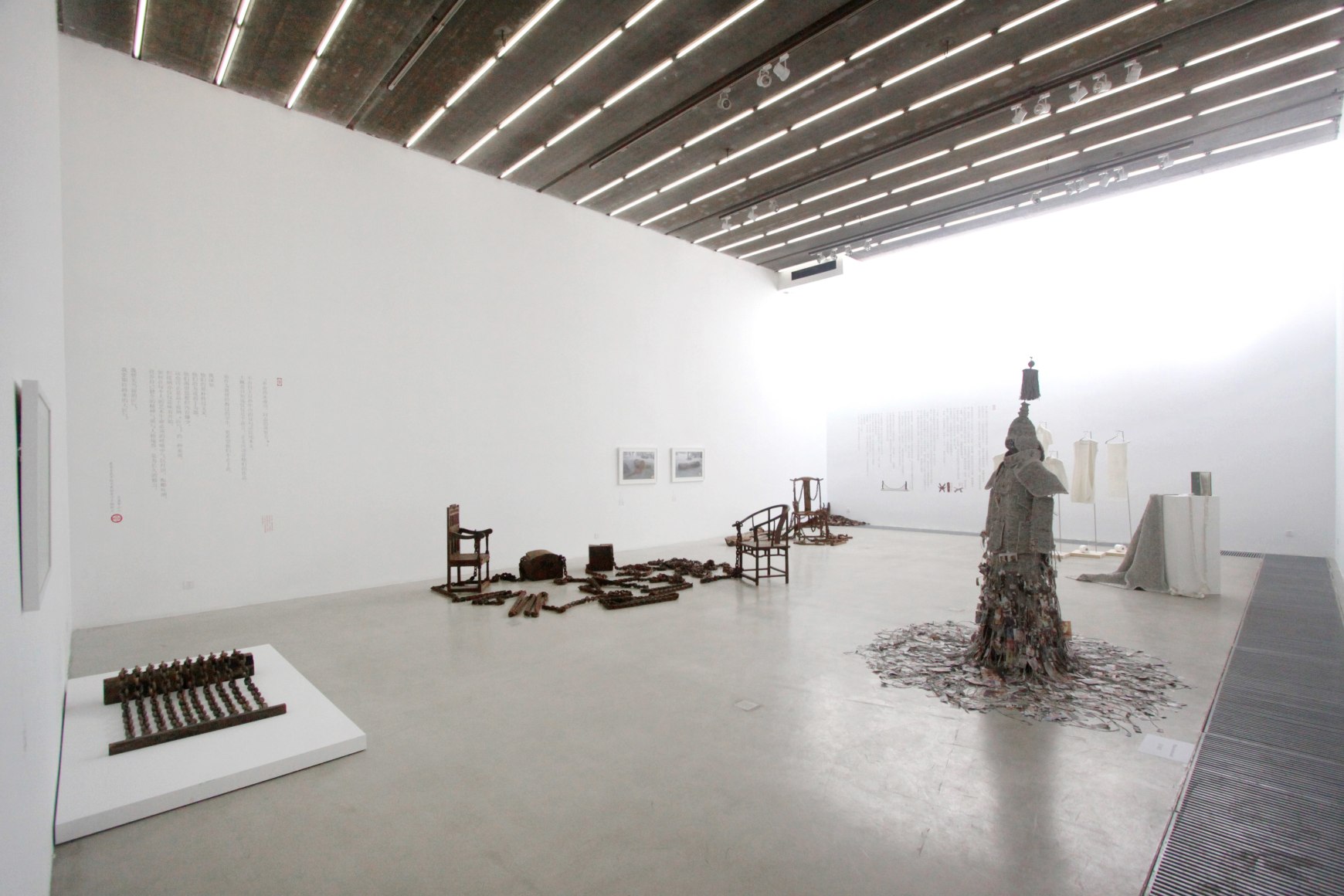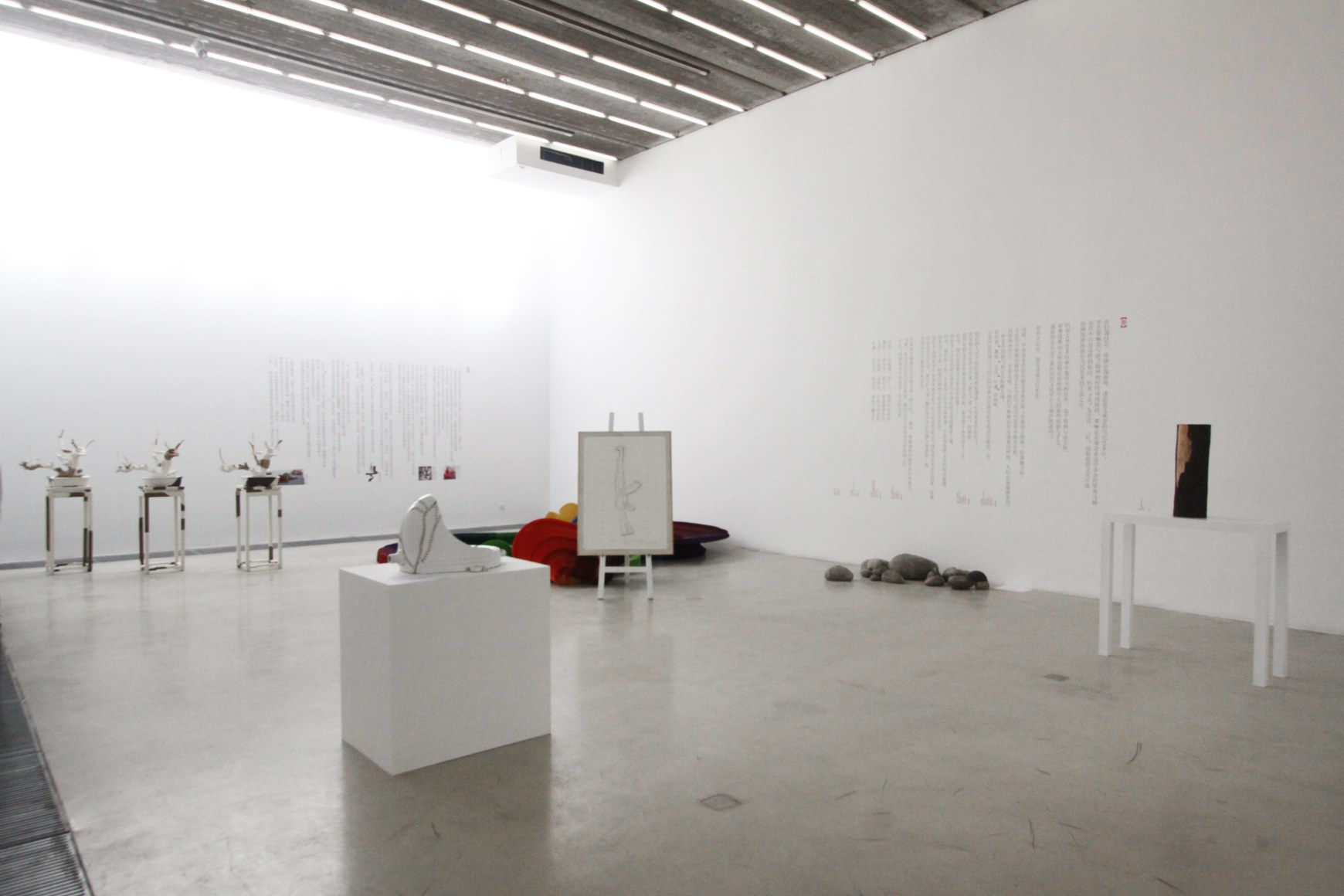The term Jiang Qi which can be roughly defined as a style of working in which the emphasis is on technique, shows how the cultural mainstream harbors negative attitudes towards the crafts. In spite of this the craftsman’s originality is praised, which creates a contradiction – the craftsman must have “xin” (referring to soul) and “qi” (referring to spirit), and “xin” is connected to “qi”, so why judge it negatively?
For contemporary art with its disdain for technique, excessive self-confidence and addiction to concepts, the crafts are either regarded as being in opposition to the avant-garde, or serve as supplements in conceptual art expression. Apart from this, in mainstream contemporary art, meaningless and low-technique cultural productions are widely popular. In the history of the humanities, the masterpieces are still immortal, but will the skills and techniques which have contributed to historical developments in the arts evaporate in the new cultural environment?
Li Hongbo, Wei Ming, Wang Lei and Ye Sen were not expected to be spokesmen for avant-garde or contemporary art. Their artistic practice did not originate in concepts, instead it was based on traditional craft methods. However, they are well aware of their position in the art world, in the current multi-cultural and international era and of the rich inheritance of traditional Chinese culture. Consequently their works are not meant to create a mirage of the traditional farming culture of imperial China, but rather to explore the connection between contemporary spirit and creativity in order to establish a new means of creation. They no longer consider their art education as the only creative resource for their artistic expression, but instead they enter the lives of ordinary people and migratory craftsmen and look to techniques established in traditional workshops for inspiration.
Many people refer to Li Hongbo, Wei Ming, Wang Lei and Ye Sen as the “Big Four” in experimental art, which encouraged them in their artistic creations. Clearly, as contemporary artists, they cannot simply be craftsmen, but the impact of traditional craft techniques and spirit has strengthened their abilities.
Li Hongbo –Paper Gourd Garland Maker
Wei Ming –Damaged Objects Restorer
Wang Lei –Paper Towel Tailor
Ye Sen –Wood Chain Maker
Li Hongbo’s work Flexibility (伸缩性) has attracted considerable attention both nationally and internationally, strengthening his confidence in further exploration of the paper garland technique. He created Old Bottles (古瓶), World (世界), A Tree (一棵树), Broken Wood (断木), Hard Stone (顽石), Weapon Analysis (枪的解析), in which he transformed the garland technique, an out-of-date traditional folk craft, into a contemporary means of expression. The latest work Hard Stone is based on real stones that the artist found. These stones have been polished by running water over thousands of years. Scars and marks are still visible on the smooth surface of the stones. During his artistic recreation, the artist turned the unruly stones into gentle forms, as if they are telling some sad stories. Weapon Analysis triggers memories of war and reflections on its horrors. Initially, the artist proceeded as if he were producing the kind of blueprints used in an arsenal for the manufacture of weapons. This approach soon underwent a rapid transformation as the weapons were transformed into rainbow colored plowshares, dangerous weapons becoming festive decorations for the viewer’s delectation.
Wei Ming is also expanding the range of his restoration work to include porcelain. Damaged Duchamp’s Fountain (打碎杜尚的小便池) does not question the validity of a masterpiece, but reinforces notions of the restoration of the material world. Outdated urinals are generally not found in today’s restrooms. If people feel sympathy for the fountain, it must develop from the process of restoration and the energy and emotion put into it. A mirror is an object of daily life used for reflecting faces and body shapes. It is very fragile, just like some relationships. Thus sometimes the mirror is used as a metaphor for the reunion of a family or a couple, the so-called “po jing chong yuan” (a broken mirror was restored). The artist uses metal pins to close the cracks in the mirror, a method with very successful results. In this process, the mirror has lost its original smoothness, but has gained new material and new meaning.
Wang Lei’s use of the braid technique in his work Hand-Woven Toilet Paper (手织手纸) gained national and international recognition when it was first exhibited. Not surprisingly, this led to increasing pressure on him as he considered his future artistic career. Recently, Wang Lei has been making a new series of works, which are full of surprises. Although the series is still based on the forms of old costumes, he adds newspaper clippings into the process of tailoring, twisting and braiding, which injects social and political meanings into the clothes. As a result the clothes have additional visual imagery besides being merely clothes, a newspaper, a figure (or it could be other things), which indicate that society has different ways of receiving the news, clearly, vaguely, or fragmentarily. The newspaper as a ready-made object in Lei’s woven clothes has reinforced the social relevance of his work, resulting in braids that are more than merely braids.
Ye Sen is neither simple nor complex. He combines the two, and the mixture represents him in his entirety as in his early work Analysis (分析). Later he created Hoisting Pulley (起重滑轮), Two Pairs of Chairs (两把椅子), Rolling Blind (卷帘) and related works which push Jiang Qi further and further into a complicated and incredible zone. The latest work Chair’s Craft Analysis (椅子的匠作分析) shows something different. All the components in this work were carved from a single huge log, using the technique known as tenon-and mortise. The chain in the work separates the other components but does not isolate them, accomplishing the dual analysis of a log and a chair. Without question, this is a complicated work by a thinking artist, but it is simple as well, when you do not subject it to analysis, but rather regard it as a chair on which one could sit.
“The Revolution has not yet succeeded. Comrades, you must carry on.”
I cannot help myself from quoting Dr. Sun Yat-sen for the conclusion. This paper is rightly just an introduction, the main text being the works themselves.
As students I have recently taught, I wish them years of continuous creativity.
I praise their Jiang Qi today, and I wish for their phenomenal Jiang Qi in the future.
June 21, 2012, Midsummer’s Day
匠气大概被定义为一种注重技艺工巧的作风,可见文化主流对“匠人”文化身份及大众审美的鄙视。但“匠心独具”又作夸奖,其实内里充满矛盾——匠人必定有“心”有“气”,心气相通,何必褒贬?在轻蔑技艺、张扬自我表现、迷恋意义观念的当代艺术中,手艺要嘛是与前卫精神相悖的顽固情结,要嘛是在观念表达中多余的穿帮马脚。也许不只是这样的原因,但“文”为空话、“匠”也低能的文化垃圾的确滚滚流淌在当代艺术的主流之中。人类艺术经典中那些不朽的巨匠之作依然不朽,难道推动文明进程从传统到今天的那些技能与手艺就真的会在这个新时代的文化平台上销声匿迹吗?
洪波、魏明、王雷、叶森原本都不曾有担当艺术“前卫”或“当代”的奢望,创作实践也并非从观念的表达开始,而是基于传统的手工艺。但是,他们很清楚自己所在的位置——国际多元文化的时代背景与中国传统文化的雄厚土壤,因而,他们的工作,不是为了在今天再重建一个传统农耕文化的海市蜃楼,而是为了寻求一种现代精神与创造的实在营造。他们不再将原有专业美术教育给予自己的造型能力当成从事艺术表达的唯一法器,而是从民众生活、游方匠人或工棚作坊中开启灵感与智慧的广场,并进入其中接纳质朴造化。 有很多人称他们为实验艺术“四大匠”,成为一种激励他们继续前行的褒奖。当然,作为当代艺术家,他们已经无法化身为工匠,但匠气的感染却分明充实了身心的力量。
洪波-盡精微,致廣大,紙葫蘆拉花匠。
魏明-碎能平,粘能安,破器物修補匠。
王雷-化腐朽,為神奇,手紙巾織衣匠。
葉森-死變活,硬變軟,鎖鏈子雕木匠。
李洪波因作品《伸缩性》受到国际国内的注目,他自己也因此而充满信心地探讨着纸拉花的匠作,并生成《古瓶》、《世界》、《一棵树》、《断木》、《顽石》、《枪的解析》等新作,让纸拉 花这种民间传统土玩意儿在当代艺术的殿堂之中显尽风流。近作一堆《顽石》是对捡来的真实石头的写生,这些石头在滚滚水流与悠长时光的冲刷中经磨历劫,圆滑的轮廓上依然可见伤痕累累,瘢迹重重,作者通过制作将他顽劣的表情变得柔软,拉开它们,仿佛可以听到一个个催人泪下的辛酸故事。《枪的解析》必然让人想到对战争的反思,作者却首先是将枪弹当成一幅架上的绘画,精密的图纸往往用于军火工厂的加工制造,在这里,却从画板的背面拉出了一道彩虹——化干戈为玉帛,于是,一张张杀伤武器的图纸将永远成为供人观赏的艺术品。 魏明也正在扩大自己的修补营生,并瞄上了锔匠。
《打碎杜尚的小便池》并非出于对经典的质疑,仍然强调的是对于物质世界的修复,但一个过气了小便池几乎没有可能出现在现实生活普通的卫生间设施当中。倘若人们对它产生珍爱之心,那一定是因为修复它所付诸的做工,以及潜在其中的精力与情感。 镜子是鉴照面容与身形的家居日用设置,它脆弱易碎,有时候被用以比喻家庭或爱人之间的情感修复,所谓“破镜重圆”是也。作者用锔钉将破镜弥合的严丝合缝,显得坚不可摧,但无论如何,它都失却了原来的光洁与平整,也增添了新的内容。
王雷使用编织的技术的《手织手纸》公开展出之后很快成为一件感染力很强的作品被国内外艺术界广泛称道,这也成为一个沉重的包袱压在他的肩上艰难前行。近来,王雷正在赶制的一组新的作品让我们看到新的契机,尽管还是古装的形制,他在将报纸裁切、搓线以及编织的过程中投入了阅读与剪报,报纸上的人像被善意的剪裁出来,成为衣服成衣之外的另一个视觉层次——报纸、衣服、人像(也可以是别的)分别提示着社会对新闻清楚、模糊、碎片或断章取义的不同采纳方式,这起码强调了报纸作为现成品在作品中使用的意义,也让他的编织手艺不止是为了编织。
叶森没那么简单也没那么复杂,简单与复杂结合起来,就是他的全部——正如他的开山作品《分析》。他后来又创作了《起重滑轮》、《两把椅子》、《卷帘》以及多块分析的系列作品,越发将这种匠气推向复杂,令人不由生出难以置信的叹服。近来的新作《椅子的匠作分析》有所不同,这把古式椅子的所有构件都是从一块整木上“分析”出来,按应有的榫卯雕琢成型,链条充当着这些构件“分”却不解体整木的若干条纽带——完成了对一块木头和一把椅子的双重分析。无庸置疑,这必定是一个善于捉摸的人完成的一项更加复杂的工作,但也很简单,你只要不做“分析”,只把它当作一把可以坐着歇口气的椅子。
“革命尚未成功,同志仍须努力。”
不由自主以孙中山的这句话结尾本文大概是自知这仅仅是个前言,正文应该是他们的作品。
而作为我曾经教过的学生,更希望他们不止于此。
我赞美当前的匠气,我更期待将来的大匠气。



